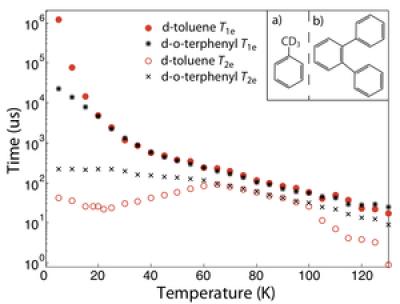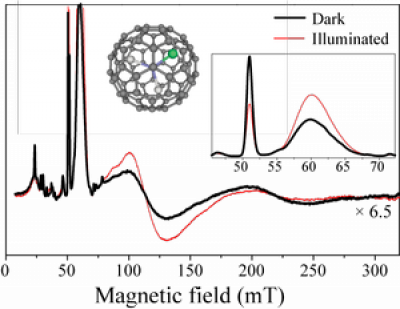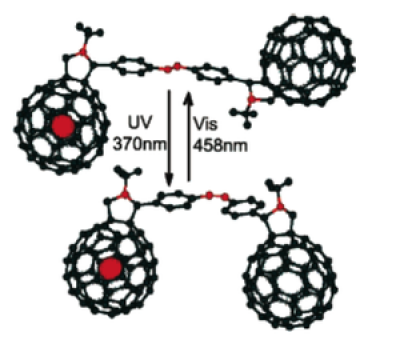Electron spin coherence in metallofullerenes

Long spin coherence times are a vital component for a quantum bit (qubit) candidate. Metal atoms encapsulated in a carbon cage, termed metallofullerenes, have previously shown limited decoherence times (<1.5 microseconds) compared to other molecular systems such as N@C60 (see other links). However, in contrast to this system they offer much higher production yields, faster purification and easier routes to larger spin architectures. The aim of this research is to understand the mechanisms behind relaxation in order to improve decoherence times in metallofullerenes. We report relaxation mechanisms in various matrices arising from metal-cage vibrational modes, spin-orbit coupling and the nuclear spin environment. Using this result, we show that metallofullerenes can yield long coherence times, exceeding 200 microseconds for Y, Sc and La@C82.
Electron spin coherence in metallofullerenes: Y, Sc and La@C82
Richard M. Brown, Yasuhiro Ito, Jamie H. Warner, Arzhang Ardavan, Hisanori Shinohara, G. Andrew. D. Briggs, John J. L. Morton
Physical Review B In Press (2010) Link
Controlling intermolecular spin interactions of La@C82 in empty fullerene matrices
Yasuhiro Ito, Jamie H. Warner, Richard Brown, Mujtaba Zaka, Rudolf Pfeiffer, Takayuki Aono, Noriko Izumi, Haruya Okimoto, John J. L. Morton, Arzhang Ardavan, Hisanori Shinohara, Hans Kuzmany, Herwig Peterlik and G. Andrew D. Briggs
Physical Chemistry Chemical Physics 12 1618 (2010) Link
Switchable ErSc2N rotor within a C80 fullerene cage

Photoswitchable structural phenomena are essential to many natural processes. In the laboratory, they have been observed in a wide range of organi and inorganic species, with switching times as short as a picosecond. Natural photoisomerisation (such as bleaching of rod and cone retinal pigments in sight) has been exploited to engineer optical switches which can be used to store information and stimulate neurons. We have measured the EPR signature of Er3+ within ErSc2N@C80, making this the first endohedral ion known to be directly excitable both by EPR and optical techniques. The EPR spectra indicate two primary configurations of the ErSc2N unit, whose populations may be manipulated by optical excitation: an excess of one configuration, obtained by thermal annealing, is converted into an excess of the other under illumination. The switching speed and reversibility of this photoisomerisation are yet to be determined; however, the long lifetime (over 12 hours at 20 K) of the switched orientation may find application in molecular memory elements.
Switchable ErSc2N rotor within a C80 fullerene cage: An EPR and photoluminescence excitation study
John J. L. Morton, Archana Tiwari, Geraldine Dantelle, Kyriakos Porfyrakis, Arzhang Ardavan and G. Andrew D. Briggs,
Physical Review Letters 101 013002 (2008) Link
Photoswitchable fullerene dimer

A photo-switchable fullerene dimer and its analogous nitrogen endohedral species have been synthesized and characterized. Irradiation by ultraviolet and visible light has been used to switch between the trans and cis isomers of both the C60- and N@C60- based dimers. Environmental perturbations experienced by the encapsulated nitrogen atom upon switching between the two isomers in degassed carbon disulfide has been determined by pulse electron paramagnetic resonance. Using the electron spin relaxation times T1 and T2 we measured field splitting parameter the molecular rotation correlation time for both isomers.
Photoisomerization of a fullerene dimer
Jinying Zhang, Kyriakos Porfyrakis, John JL Morton, Mark R Sambrook, Jeffrey Harmer, Li Xiao, Arzhang Ardavan and G Andrew D Briggs,
Journal of Physical Chemistry C 112 2802 (2008) Link
 Close
Close

